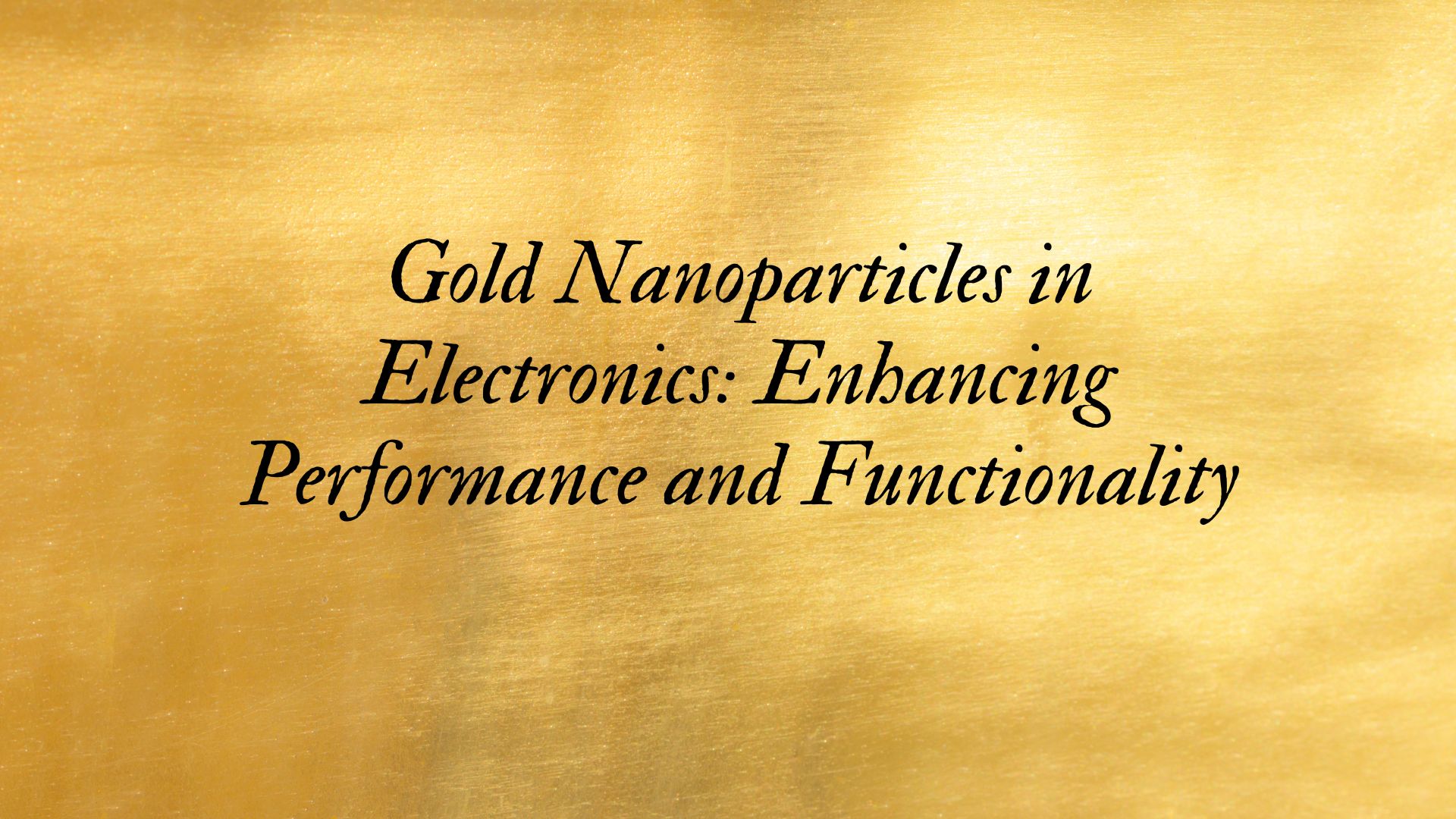Gold nanoparticles (AuNPs) have garnered significant attention in the field of electronics due to their exceptional physical and chemical properties. As technology advances and the demand for more efficient, smaller, and multifunctional electronic devices increases, the role of gold nanoparticles in enhancing performance and functionality becomes ever more critical. This article explores the various applications of gold nanoparticles in electronics, their unique properties, and the potential future developments that could further revolutionize the industry.
The Unique Properties of Gold Nanoparticles
Gold nanoparticles possess several characteristics that make them highly suitable for electronic applications. Their conductivity is one of the most important attributes, as gold is an excellent conductor of electricity. At the nanoscale, gold particles exhibit enhanced surface area-to-volume ratios, leading to increased reactivity and stability, which is crucial for various electronic components.
Additionally, gold nanoparticles have remarkable optical properties due to their ability to support surface plasmon resonance (SPR). This property allows them to be used in optoelectronic devices, where light and electricity interact. The biocompatibility of gold nanoparticles also opens the door for their integration into bioelectronics, bridging the gap between electronics and biological systems.
Applications of Gold Nanoparticles in Electronics
Conductive Inks and Pastes
One of the most prominent applications of gold nanoparticles in electronics is in the development of conductive inks and pastes. These materials are used in the production of printed electronics, which involve printing electronic circuits on various substrates, such as paper, plastic, or fabric. Gold nanoparticles provide high conductivity and stability, making them ideal for creating flexible, lightweight, and durable electronic devices. These devices can be used in a wide range of applications, from wearable technology to flexible displays.
Sensors and Biosensors
Gold nanoparticles are widely used in the fabrication of sensors and biosensors due to their high sensitivity and specificity. In chemical sensors, gold nanoparticles can detect minute changes in the environment, such as the presence of gases or chemicals, by altering their electrical properties. In biosensors, gold nanoparticles can be functionalized with biological molecules, allowing for the detection of specific biomolecules, such as proteins or DNA, with high precision. These sensors are critical in medical diagnostics, environmental monitoring, and security applications.
Transistors and Integrated Circuits
The miniaturization of electronic components is a key trend in the electronics industry, and gold nanoparticles play a vital role in this process. Gold nanoparticle-based transistors and integrated circuits are being developed to meet the demand for smaller, faster, and more efficient electronic devices. Due to their excellent conductivity and ability to form strong, stable connections with other materials, gold nanoparticles are being integrated into the next generation of transistors, which are crucial components in all electronic devices.
Memory Storage Devices
In the realm of data storage, gold nanoparticles are being explored for their potential to enhance the performance of memory devices. For example, in flash memory, which is widely used in smartphones, tablets, and other electronic devices, gold nanoparticles can be used to improve the speed, capacity, and longevity of the memory cells. By incorporating gold nanoparticles into the memory architecture, researchers are developing devices that can store more data in less space while reducing power consumption.
Optoelectronics
Gold nanoparticles’ unique optical properties make them ideal for optoelectronic applications, where the interaction between light and electronics is fundamental. In devices such as light-emitting diodes (LEDs), solar cells, and photodetectors, gold nanoparticles can enhance light absorption, emission, and conversion efficiencies. Their ability to manipulate light at the nanoscale enables the development of more efficient and compact optoelectronic devices, which are essential for energy harvesting, displays, and communication technologies.
Future Prospects and Challenges
The future of gold nanoparticles in electronics is promising, with ongoing research focusing on improving their performance and expanding their applications. One of the key areas of interest is the development of hybrid materials that combine gold nanoparticles with other nanomaterials, such as carbon nanotubes or graphene, to create multifunctional electronic components with enhanced properties.
Another exciting prospect is the use of gold nanoparticles in quantum computing. Due to their unique electronic properties at the nanoscale, gold nanoparticles could play a role in the development of quantum bits (qubits), which are the building blocks of quantum computers. This could revolutionize computing by enabling unprecedented processing power and speed.
However, there are also challenges associated with the widespread adoption of gold nanoparticles in electronics. One of the primary concerns is the cost of gold, which is significantly higher than other materials commonly used in electronics. Additionally, there are technical challenges related to the precise control and integration of gold nanoparticles into electronic devices. Overcoming these challenges will require further advancements in nanotechnology and materials science.
Conclusion
Gold nanoparticles are poised to play a transformative role in the electronics industry. Their exceptional properties, including high conductivity, stability, and unique optical characteristics, make them ideal for a wide range of applications, from sensors and memory devices to optoelectronics and quantum computing. As research and development continue, the potential of gold nanoparticles to enhance performance and functionality in electronics is vast, promising to drive the next wave of innovation in the field. However, to fully realize this potential, challenges related to cost, scalability, and integration must be addressed. With continued advancements, gold nanoparticles could become a cornerstone of future electronic technologies, leading to smaller, faster, and more efficient devices that redefine the boundaries of what is possible.

